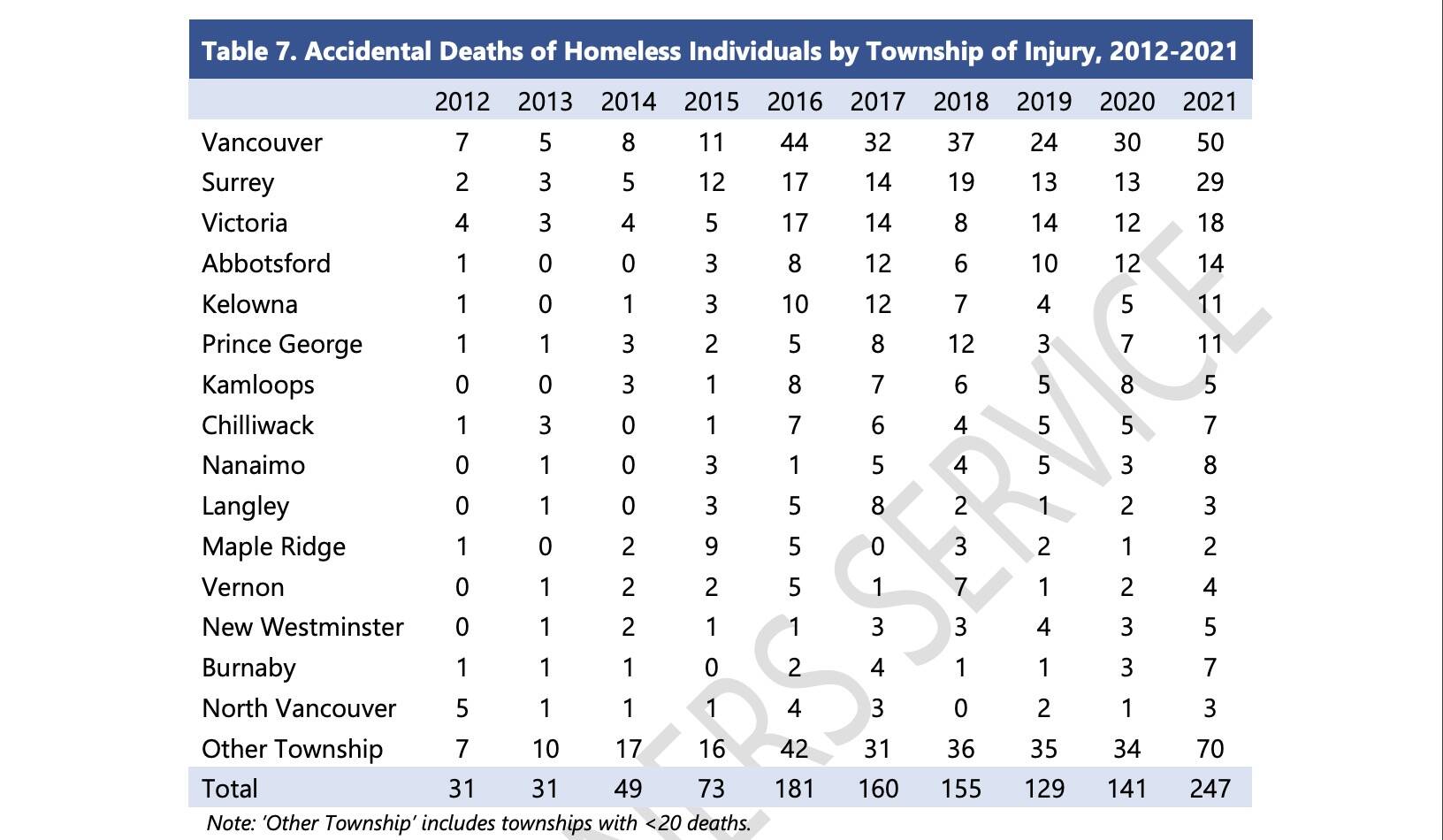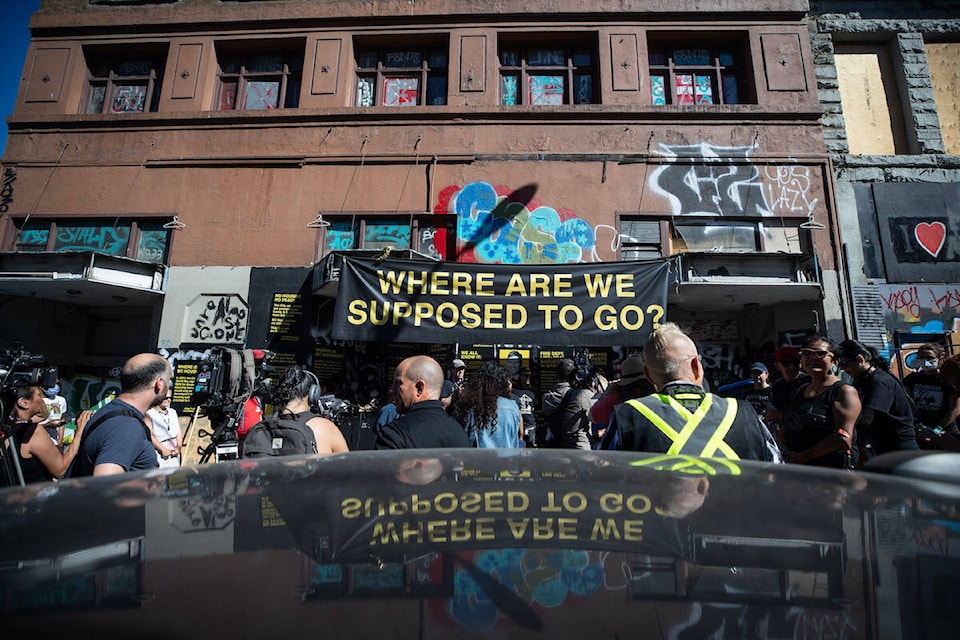A staggering 247 British Columbians experiencing homelessness died in 2021 – marking a concerning spike in such cases, likely fuelled by the province’s ongoing toxic drug poisoning crisis.
The grim preliminary report, released Wednesday (Oct. 12) in line with Homelessness Action Week, noted a 75 per cent increase in the number of deaths last year when compared to 2020.
The findings reflect the risks and realities that people experiencing homelessness face on a daily basis, chief coroner Lisa Lapointe said in a statement.
“We know that many are facing significant health concerns, including physical disabilities, mental-health challenges and substance-use issues. Additionally, as is also evident in the province’s housed population, the report details the significant risks associated with toxic drugs for those who are unhoused.”
Death amongst those living in temporary housing, on the streets, in shelters or in their vehicle has been on the rise since 2016, when the province declared its first public health emergency due to a rising number of overdose deaths and a spike in accidental illicit fentanyl poisonings. In 2021, 2,267 people died from the toxic drug supply circulating in the province.
ALSO READ:
ALSO READ:
In 2015, the deaths of 73 people experiencing homelessness were recorded, spiking to 181 deaths in 2016.
In the past year, those between 30 and 59 years old accounted for 72 per cent of the 247 reported deaths, 83 per cent of whom were men.
More than half of the investigated deaths happened in Fraser Health and Vancouver Coastal Health, at 32 per cent and 25 per cent, respectively.
These findings align with what we know about the ongoing toxic drug poisonings, which have adversely impacted middle-aged men in the Lower Mainland. Roughly 195 of the 247 deaths last year were due to toxic drugs.
Lapointe said that these findings correlate with the agency’s recent death panel report that involved a deep dive into those dying from the illicit drug supply, who were found to be people living in poverty and unstable housing.
“This data in this release reinforces the panel’s recommendations: the urgent creation of a province-wide framework for distribution of safer supply; the establishment of clear goals, targets and deliverable time frames to reduce the number of illicit drug toxicity events and deaths; and the establishment of an evidence-based continuum of care.”

Other causes for these deaths included 13 per cent considered natural and seven per cent ruled a suicide. The remaining were considered accidental.
For the purposes of the report, an individual experiencing homelessness was defined as: a person living outdoors, in a makeshift shelter, a parked vehicle, or any other structure not intended for habitation; a person staying at an emergency or short-term shelter or being temporarily sheltered by friends or family for less than 30 days; a person in temporary modular housing, safe house for youth, or transition house for women and children fleeing violence.
In a joint statement, Attorney General Murray Rankin and Mental Health Minister Sheila Malcolmson called the report a “stark reminder of the devestating impacts of the toxic drug crisis on people in B.C., compounded by the daily risks and health challenges faced by people experiencing homelessness.”
They went on to thank frontline workers who work with people in need.
“We are determined to prevent people from becoming homeless in the first place. We are increasing supports to do just that, including new, expanded supports for youth aging out of care, and rent supplements coupled with health, housing and social supports.”



